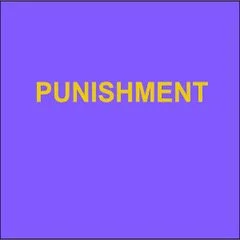Challenges to Advancing Bail Reform: Lessons from Five States
By Stephanie Wylie and Ames Grawert
Every day, judges set bail for thousands of individuals charged with a crime. Bail represents a promise that they will return to court for their next court appearance. In many cases, courts require that this promise be secured by money beyond people’s means. As a result, despite the presumption of innocence, thousands remain behind bars for months or even years until their cases are resolved. Tying pretrial release to one’s ability to pay means that all too often wealth — not public safety, nor the likelihood of returning to court — determines who goes free and who awaits case resolution in jail. Those without the means to post bail in cash can turn to third-party guarantees known as bonds, typically arranged by private bail bond companies that front the cost for a nonrefundable fee that can run into the thousands of dollars — a debilitating sum for many people. This option may not be available for smaller but still unaffordable bail amounts. This system persists despite growing research on the harmful consequences of detention. Even a brief period in jail increases the risk that a person will lose employment and housing. Time in jail also increases the likelihood of future arrests. This pattern could be due to the economic effects of incarceration (such as wage loss) or to disruptions to interpersonal relationships and community ties. The threat of jail may even induce false guilty pleas, as some people would rather face a criminal record than spend additional time in pretrial detention. The bail system contributes to the United States’ high rate of incarceration. An estimated two-thirds of the 750,000 people in the nation’s jails are awaiting resolution of their cases; as such, they are legally innocent. While some are detained because they have been deemed a threat to public safety or for another specific cause, most simply cannot afford to pay bail. The number of people held in pretrial detention has risen sharply over time, multiplying by more than a factor of seven from 1970 to 2021. The average amount of time spent in jail has also increased, from roughly two weeks in 1983 to nearly five weeks in 2021. Over the past two decades, jurisdictions around the country have revised their policies on pretrial release, bail, and detention, drawing on broad and often bipartisan concern about the role of money in determining who goes free and who awaits trial in jail.10 Despite progress, however, political backlash and implementation challenges have stymied reforms. This report highlights recent examples of bail reform and the complicated dynamics that have prevented these policies from living up to their potential. Specifically, the report spotlights five jurisdictions that undertook major changes to bail policies through a variety of mechanisms, including legislation, litigation, and amendments to court rules. Three jurisdictions ultimately rolled reforms back in whole or in part; in the other two, reforms led to unintended increases in pretrial detention. What happened? Lawmakers often made bail reform a scapegoat for rising crime rates, particularly during the Covid-19 pandemic, which coincided with increases in violent crime. But rising crime is by no means limited to 2020, and bail reform has long been a wedge issue. Further, the difficulty of acquiring and studying criminal justice data has made it hard for policymakers to defend or explain the effects of bail reform policies. Finally, judges, prosecutors, and pretrial supervision agencies have sometimes failed to adapt to reforms, leading to confusion and surprising results, such as seemingly paradoxical increases in supervision and detention. Only by understanding the shortcomings of past reform efforts can advocates begin to overcome the challenges inherent to building a more equitable and efficient pretrial justice system
New York: Brennan Center for Justice at New York University School of Law, 2024. 22p.


